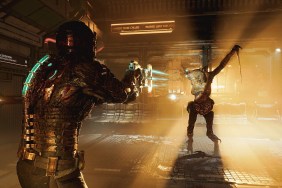When there’s no more room in Hell, the dead will become zombie samurai dishwashers…
Back at around GDC last year, we were treated to a few trial games from Microsoft’s XNA hub community of game creators through a limited time special edition of the Xbox 360 Live Arcade. Among these games was The Dishwasher, a bloody hack-and-slash game that demoed brilliantly well. Fast forward to now, the creators of the game, as Ska Studios, won the Microsoft’s Dream Build Play challenge, and got funds to back the production of a full-fledged XBLA game.
[image1]The convoluted setting to Dead Samurai is told through comic book panels: a story of an ex-dishwasher turned undead samurai who uses special "dish" powers and cutting tools to hack up everything that stands in his way, from government agents to rival samurai, and you guessed it, ninjas with lasers – not attached to their freakin’ foreheads, disappointingly. The action is inherently button-mashy, as waves and waves of enemies come from all possible directions, desiring a rotten piece from our undead friend. Hacking endless foes is rewarded with a special currency used to acquire weapons, health, and other upgrades; that combined with hidden guitar picks make up part of the game’s limited re-playability.
Unfortunately, however, is that Dishwasher is exactly the type of game that is perfect to be played as a demo. The button-mashing action quickly becomes repetitive, varying from dodging to attacking to dodging to attacking (to dying). Dying might seem a paradox for a dead samurai, and a paradox you’ll see often, since the game tends to get punishing rather early on, even on lower difficulty settings. In a way, it could be compared to The Behemoth’s Castle Crashers, without much of the charm or the four-player mayhem
[image2]A bit of variety can be credited, though, to the different weapons acquired throughout the game: cleavers, swords, and of course, what samurai would be caught dead without (ha, ha) a shotgun, which provides a bit of spice to the gallons of blood spilled on screen. Killing enemies can provide bonus points and health in the form of a pop-up button that appears on screen when it’s time for a "fatality" move, and is more often than not, very bloody.
And blood – red or black, depending on your choice – will be spilt in an infinite amount as countless fools are cut, shot, and diced. Taking a cue from the visual style of old paper-doll stop-motion films combined with a now almost cliché inspiration on Tim Burton-esque washed out color films, The Dishwasher certainly gets points for looking different. On the other hand, this style tends to get in the way of the action, since characters – both heroic and villainous – tend to blend in with the environment, due to the distant camera favoring smaller units and bigger sets. Add to that the frenetic pace of the action and the blood, and it’s a bit much at times.
The Dishwasher: Dead Samurai suffers from what a lot of games do – it starts off with a bang, making a great demo piece but has a hard time keeping the momentum. Sadly for The Dishwasher, its momentum is really short lived. However, if you dig the sort of masochistic experience found in bullet hell shooters and beat ’em ups like Alien Hominid, there is a challenge, albeit a repetitive one, in Dead Samurai.
-
Fun, bloody action
-
Tight controls
-
Limited replay value
-
Great as demo, not much more
-
Visuals get in the way sometimes
-
Frustratingly difficult early on
-
Multiplayer over Xbox Live is broken for now











